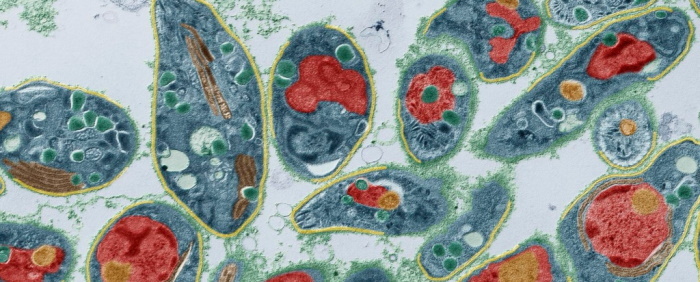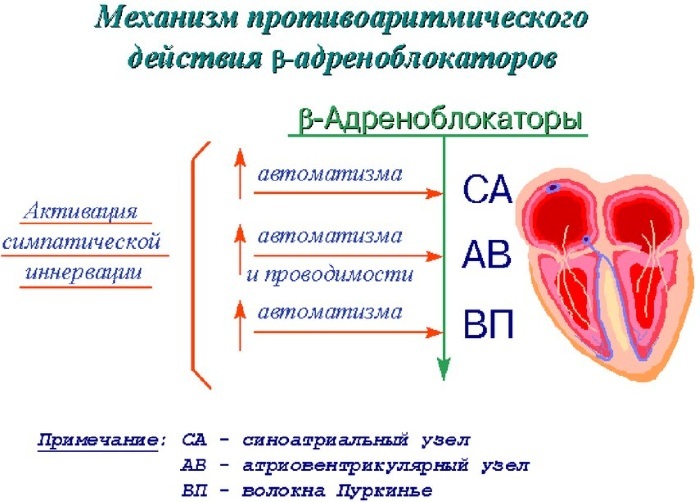Content
- What is buccal medication
- Method advantages
- Disadvantages of the method
- The rate of absorption of drug components during buccal administration
- In what cases is the buccal method of taking drugs used?
- Preparations for resorption
- Why is glycine taken exactly buccal
- Difference from sublingual technique
- When is it better to choose the sublingual method?
- Video on the use of buccal glycine
Buccal is one of the ways of using medicines. The technique has its own characteristics, advantages and disadvantages. It is necessary to take drugs in this way only in tablet form.
What is buccal medication
The technique is the use of a cheek product. Translated from the Latin language "trans" means "for" or "through", and "buccal" means "cheek".
For this method of using drugs, it is necessary to place a tablet or capsules on the cheek and hold them until completely dissolved. In this case, the active substance will be quickly absorbed into the systemic and local bloodstream, and saliva will become an effective assistant for enhanced dissolution of the drug.
There are no strict guidelines for buccal reception. Experts recommend placing the drug between the upper lip and jaw and holding it with your tongue so that the drug is completely dissolved.
Also, special plates are produced that must be glued to the surface of the cheek or to the mucous cavity of the upper gum. In this case, the active substance of the agent will enter the body gradually over a long time.
Method advantages
The technique allows the use of funds in an emergency, for drugs that contain highly active components (for example, glycine).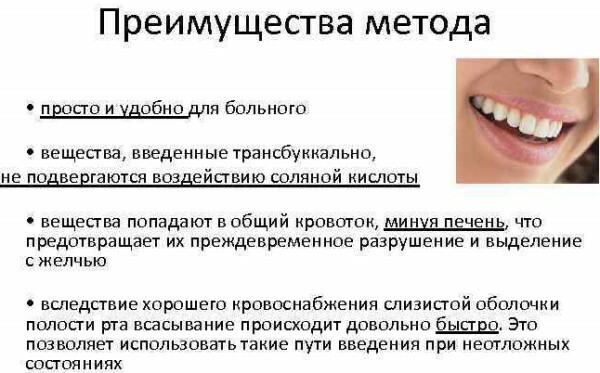
Pros of the buccal method:
- Convenience and ease of use. Taking pills does not require special knowledge and skills. The medicine is placed behind the upper gum or cheek and left there until it is completely dissolved.
- Rapid therapeutic effect (achieved through direct entry into the bloodstream). The effect of this method of drug administration is the fastest and can occur within a few minutes.
- High level of absorption (absorption of the active ingredient). Despite local application of funds, they are quickly absorbed and enter the systemic circulation.
- Fast withdrawal of active ingredients and decay products of medicines from the body. The half-life with such use is 4-10 times higher than with oral use of tablets.
- The absence of a negative effect of digestive enzymes and gastric juice on the component, since the drug does not enter the intestines and does not undergo hepatic transformation.
At the same time, it is also considered a positive point that the drug does not undergo metabolic transformation in the liver and does not exert additional stress and negative effects on the organ.
Disadvantages of the method
Buccal is one of the most effective, but not popular methods of drug administration, which has both advantages and disadvantages that should be considered before it using.
Despite the numerous positive aspects of the method, it has several significant disadvantages. This does not allow the use of drugs in a similar way for a wide range of patients.
Flaws:
- Sensation of the taste of the drug. Most drugs have a characteristic unpleasant aftertaste or bitterness (in the case of antibiotics). Moreover, in some cases, patients developed vomiting, so this method of application is not prescribed to everyone.
- Slight absorption of the components of the product. Due to the small size of the oral mucosa, minimal doses of drugs can be absorbed, and therefore, the duration of therapy can be significantly longer than with other modes of administration.
- Lack of persistent therapeutic action. Taking drugs by the cheek with complex disorders causes only a temporary improvement in the condition. In this case, long-term therapy is required to achieve a therapeutic result.
- Negative effect on the mucous membrane. In some patients, when taking too aggressive medications, the development of inflammation and small ulcers was noted, therefore, in diseases of the oral cavity, the use of drugs in the cheek is contraindicated.
- Drugs can have a negative effect on tooth enamel, which also makes it impossible to take medication in patients with fragile tooth enamel.
Due to the indicated disadvantages, this method of drug administration is not prescribed to everyone.
The rate of absorption of drug components during buccal administration
The absorption rate depends on the specific drug. Since the drugs used in this technique contain highly active components, the effect occurs almost immediately.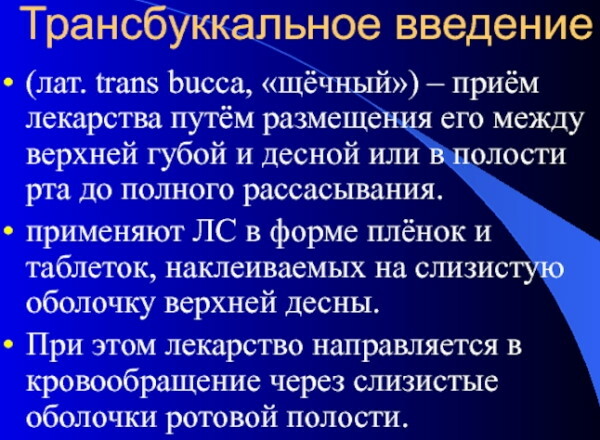
The therapeutic effect with this application occurs in about 1-2 minutes. Therefore, the suction rate is about 1 minute. In some cases, this indicator can be reduced by 2 times, depending on the medication used.
In what cases is the buccal method of taking drugs used?
The technique is universal and can be recommended in many cases and for various diseases.
Thus, this method of drug administration can be prescribed in the following situations:
- Small children;
- children with developmental delays;
- patients with neurological diseases (mentally ill who refuse to take drugs);
- during or after a stroke;
- disorders in the esophagus;
- swallowing problems.
Under these conditions, other methods of drug administration are used - oral, parenteral.
Preparations for resorption
Buccal is (taking medications through such a technique is necessary in emergency cases and to achieve a quick result) the introduction of medicinal means through their resorption in the oral cavity, which makes it available for many different violations and contraindications to the standard reception drugs.
There are several medicinal groups that can be used when laying on the cheek:
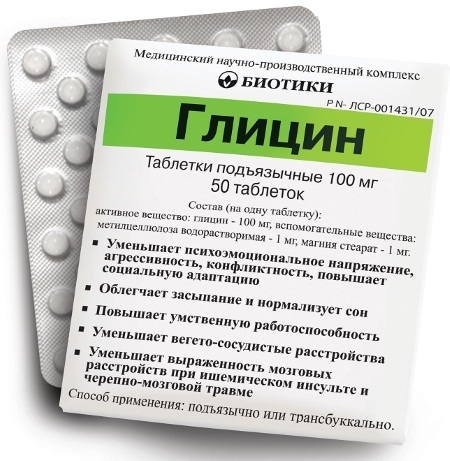
| Pharmacological groups | Name | Description |
| Antiviral agents | Aflubin, Influcid | They are used for colds. Medicines can help reduce inflammation and fever. They have mucolytic and expectorant properties. Medications are prescribed for ARVI and influenza. Dosages are determined individually, based on the specific drug. Due to their direct action on the mucous membrane, protection against the penetration of pathogenic microflora is formed. |
| Preparations for blood vessels | Glycine | The drug helps to reduce psychoemotional stress, increases metabolic reactions in the brain, and also prevents the further development of disorders associated with the consequences stroke. The dosage of the agent is calculated individually according to the identified violation. |
| Glucocorticosteroids | Oxytocin, Testosterone, Undecanoate, Fluoxymesterone | Medications are prescribed to achieve a more pronounced and faster effect. With buccal use, there is a rapid increase in hormones in the blood. Each drug has its own dosage, contraindications and duration of administration. |
| Topical preparations for use in dentistry and ENT practice | Septefril, Islamint | When using these drugs, a rapid development of the therapeutic effect is noted, since the drugs are actively absorbed into the bloodstream and are intended for local use. |
| Heart preparations | Nitroglycerine | The medication is used in emergency cases to relieve signs of cardiac disorders: angina pectoris, myocardial infarction, acute left ventricular failure. Dosages depend on the specific case and are selected based on the situation. The buccal route of drug administration allows you to quickly eliminate dangerous conditions and avoid various consequences, including death. |
| Medicines for lactation | Desaminooxytocin | The medication is used to stimulate labor or to enhance the formation of breast milk in women after pregnancy. Thanks to local use, there is a rapid formation of breast milk, which is necessary for a full and adequate feeding of the baby. |
| Analgesics | Analgin | Anesthetic drug. It can be administered orally or buccally, depending on the indication. Most often, tablets are prescribed for toothaches, since local use can quickly eliminate pain. You can also pre-grind the product and put it behind the upper gum or directly on the area of the diseased tooth. |
To use medicines in children, you must first grind the tablet to a powdery state and place it behind the upper gum. Before using any of these funds, a mandatory doctor's consultation is required.
Why is glycine taken exactly buccal
Taking Glycine by the buccal method is necessary to achieve a more pronounced therapeutic effect. At the same time, the drug is often used for neurological disorders, which makes it difficult to take it in a different way (orally).
Thanks to the technique, it is possible to achieve the following effects:
- lack of exposure to hydrochloric acid, which allows you to preserve all the properties of the drug;
- regulation of metabolism;
- increased activity and normalization of reactions of inhibition of the central nervous system;
- increasing mental and intellectual ability;
- elimination of psycho-emotional stress;
- the drug exhibits high antioxidant and anti-toxic properties;
- decrease in aggressiveness and conflict;
- strengthening adaptation in society;
- increased mood;
- normalization of sleep and biological rhythms;
- decrease in the severity of vegetative-vascular disorders;
- reduction of manifestations caused by a previous stroke or TBI (traumatic brain injury);
- elimination of toxic damage caused by the intake of alcoholic beverages or medications.
Since Glycine is an amino acid found in various foods, it is systematically absorbed into the body throughout life. However, over time, its amount may decrease, and the products contain an insignificant concentration of the component.
To quickly increase the level of amino acids in the body, the drug is used in a buccal manner.
To achieve a therapeutic effect and obtain the required amount of amino acid when administered orally, 5-10 times more of the drug will be required.
Dosing rules of the drug:
- Stressful situations, impairment of memory and attention, deviant disorders, mental retardation - 0.1 g from 2 to 3 times a day. The duration of therapy is from 2 weeks to 1 month.
- Functional and organic disorders of the nervous system - from 0.05 to 0.15 g 2-3 times a day, depending on age. The duration of the course is 1-2 weeks. If necessary, the treatment can be extended up to 1 month.
- Insomnia - 0.05-0.1 g before going to bed.
- Stroke - the first 3-6 hours after the violation take 1 g. After that, within 1-5 days, take 1 g per day. Then, for a month, they consume 0.05-0.1 g 3 times a day.
- Prevention and remission in neurotic disorders - 0.1 g 2-3 times a day. The duration of therapy is from 2 weeks to 1 month. In total, from 4 to 6 such courses can be conducted.
A wide range of indications and the effectiveness of the drug allow it to be used even in childhood.
Difference from sublingual technique
Buccal is (even small children can take drugs in this way) a method of taking drugs that is very similar to the sublingual administration of drugs. However, each method has its own distinctive features and application nuances.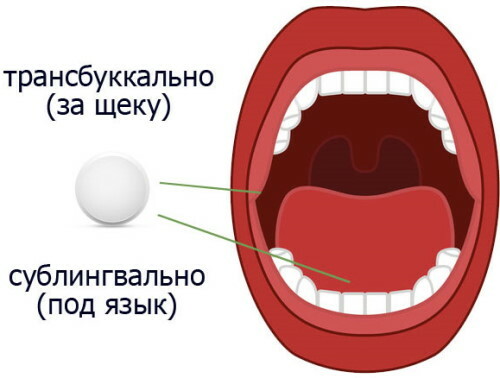
Therefore, for sublingual use, the product must be placed directly under the tongue. This area contains the largest vessel in the oral cavity (sublingual artery).
As in the case of the buccal technique, this route of administration is used for problems with swallowing or in young children.
The difference is that sublingual administration can be prescribed to patients who have dental problems (the drug does not come into contact with the enamel and does not have a negative effect on it). In this case, in this case, the medication can be exposed to the aggressive effects of the environment of the digestive tract.
Also, this method is suitable for patients who have high risks of loss of consciousness, since in the first and second cases there are risks of getting the medicine into the respiratory tract. However, with sublingual use, these risks are slightly lower.
In these 2 cases, cheek medication is not recommended.
When is it better to choose the sublingual method?
Buccal is (take pills by the cheek should be strictly in accordance with the instructions for a specific medication) method of administration medications, which is recommended to be prescribed only in the absence of the possibility of other methods of administration or, if necessary, such use.
Sublingual medication is recommended to achieve a rapid therapeutic effect that should develop periodically, that is, for the relief of isolated cases of disorders (angina pectoris, heart attack myocardium).
Buccal administration is necessary in cases where the action of drugs should be systematic, aimed at eliminating the disease.
To eliminate the symptoms of any violations, it is enough to use sublingual medications (once or as needed). Also, such an introduction can be used as a premedication (with an integrated approach). The protective method is not suitable for such purposes, since in this case a single dose of the agent is required.
Sublingual use of drugs is indicated in cases where there are any allergic or inflammatory reactions or congenital abnormalities that prevent the use of drugs buccal.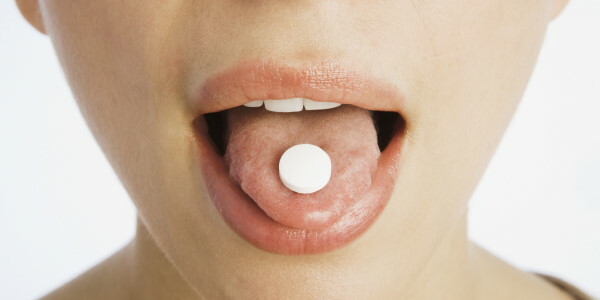
Also, in some cases, the sublingual use of drugs may be recommended by a specialist. It is usually prescribed for young children or patients with non-standard physiological characteristics.
It is necessary to take drugs in a buccal way only as prescribed by a specialist. This technique allows you to quickly and effectively cope with various diseases and avoid the development of negative effects on the stomach and liver.
Video on the use of buccal glycine
Instructions for the use of glycine:

